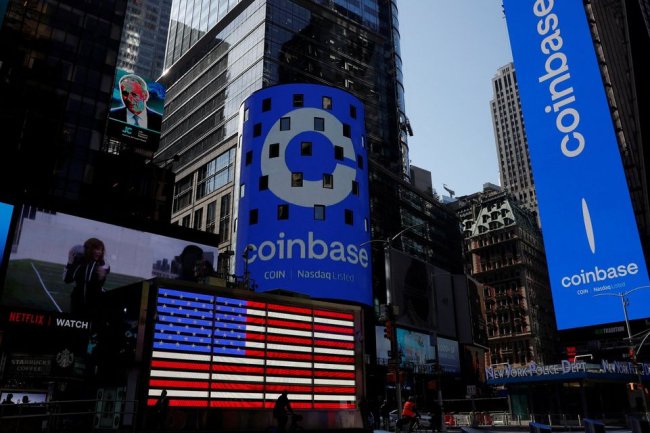Fed to Debate What Would Prompt Rate Hike This Fall
Central bank is preparing to raise interest rates this month to a 22-year high Fed Chair Jerome Powell said last month that officials have to be prepared to follow inflation data as it unfolds. Photo: Manu Fernandez/Associated Press By Nick Timiraos July 14, 2023 12:01 am ET The outcome of the Federal Reserve’s July meeting appears to be all but decided: Many officials signaled in recent speeches and interviews that they support a quarter-percentage-point increase that lifts interest rates to a 22-year high. The real debate at the July 25-26 gathering is likely to center on what it would take to prompt another rate hike in September or in the fall. Inflation broadly slowed last month, raising the prospect that the July increase will be the Fed’s final upward move in its inflation fight.


Fed Chair Jerome Powell said last month that officials have to be prepared to follow inflation data as it unfolds.
Photo: Manu Fernandez/Associated Press
The outcome of the Federal Reserve’s July meeting appears to be all but decided: Many officials signaled in recent speeches and interviews that they support a quarter-percentage-point increase that lifts interest rates to a 22-year high.
The real debate at the July 25-26 gathering is likely to center on what it would take to prompt another rate hike in September or in the fall. Inflation broadly slowed last month, raising the prospect that the July increase will be the Fed’s final upward move in its inflation fight.
The Fed last month held its benchmark federal-funds rate steady in a range between 5% and 5.25%, its first pause after 10 consecutive increases since March 2022, when officials raised it from near zero. At the June meeting, most officials anticipated two more rate rises this year would be warranted if the economy grew modestly and inflation pressures eased steadily.

Dallas Fed President Lorie Logan has expressed concern on whether inflation will return to the Fed’s target in a sustainable way.
Photo: ANN SAPHIR/REUTERS
Despite the better news on inflation released Wednesday, officials are motivated to lift rates this month in part because overall hiring and economic activity since May have been stronger than anticipated. In addition, some officials want to see that inflation continues to ease before ending increases.
The index for core inflation, which excludes volatile food and energy prices, posted its smallest monthly increase in more than two years in June, rising less than 0.2% from the prior month. That followed six months in which core prices rose much faster at around 0.4% a month.
“I would say we’re close, but we still have a bit of work to do,” Michael Barr, the Fed’s vice chair for supervision, said in a Monday interview.

Atlanta Fed President Raphael Bostic has said that officials should ‘wait and let our policy work.’
Photo: David Paul Morris/Bloomberg News
Fed governor Christopher Waller said in a speech Thursday evening in New York that he wants to see evidence that the latest inflation slowdown wasn’t a fluke. The recent report, he said, “warmed my heart, but…I’ve got to make policy with my head. And I can’t do that on one data point.”
Fed Chair Jerome Powell framed last month’s decision to hold rates steady as an effort to give officials more time to study the impact of the Fed’s past moves. Officials also want to understand any economic fallout from higher bank funding costs following the failure of three midsize institutions earlier this year.
Even though several officials wanted to raise rates last month, Powell secured unanimous support from the rate-setting Federal Open Market Committee in part because officials strongly signaled more rises were likely.
Those officials, known as hawks, want additional increases because they are worried it will be harder to bring down inflation further if economic activity and hiring don’t slow enough.
Jerome Powell, as chair of the Federal Reserve, appears to hold the country’s economic health in his hands. It is a role that has earned him both praise and criticism. John McColgan for The Wall Street Journal
“I remain very concerned about whether inflation will return to target in a sustainable and timely way,” Dallas Fed President Lorie Logan, a voting member of the FOMC this year, said in a recent speech.
Interest-rate increases slow the economy through financial markets by lowering asset prices and raising the cost to borrow. Officials worry that holding rates steady in July, when an increase is widely anticipated by investors, would ignite a market rally that eases financial conditions and makes it harder to bring down inflation.
Logan said she voted in support of last month’s pause even though she favored an increase because officials delivered “an overall package of communications” that strongly signaled more rises were needed. “At this point, it is important for the FOMC to follow through on the signal we sent in June,” she said.
Hawks could argue at this month’s meeting that the Fed should be prepared to raise rates again in September. “I’ve certainly heard from business contacts in my district that if you think you’re going to be having to move rates up, just get it done,” Cleveland Fed President
Loretta Mester said on a call with reporters Monday.Waller said Thursday that if inflation doesn’t continue to decline and there aren’t signs of a significant slowdown in economic activity, then he would favor a second hike in September. “If the data looks like we’re making progress” and the consumer-price index reports for July and August resemble the June reading, “the data would suggest maybe stopping,” he said.
Two officials last month thought the Fed wouldn’t need to raise rates again this year. The central bank should “wait and let our policy work,” Atlanta Fed President Raphael Bostic
told reporters in Ireland in late June.Policy makers boosted interest rates aggressively in 2022 and then slowed the pace at the end of last year. Officials who think the impact of the Fed’s rate increases has yet to take full effect are more likely to favor waiting until November or December to decide whether a second rate increase will be appropriate.
If economic activity slows more by then, officials could decide not to raise rates again and move to a new phase of their tightening campaign—one in which they hold rates steady as inflation slows. That would lead inflation-adjusted, or real, rates to rise higher.
“We’ve all seen inflation be, over and over again, more persistent and stronger than we expected. At some point that may change, and we have to be ready to follow the data and be a little patient as we let this unfold,” Powell said at a conference in late June.
SHARE YOUR THOUGHTS
What are you watching for at the Federal Reserve’s July meeting? Join the conversation below.
Officials will have two additional months of employment and inflation data ahead of the September meeting, and one more month of both by the November decision.
“There’s going to be a lot more information that comes in before they have to make the decision about the second hike,” said David Wilcox, a senior economist at Bloomberg Economics and the Peterson Institute for International Economics.
Wilcox, a former senior Fed adviser, expects Powell will take a neutral position on the question at his July 26 press conference. “The message will probably be that progress is being made, even if it is not being made as quickly as anybody would like,” he said.
Write to Nick Timiraos at [email protected]
What's Your Reaction?

















